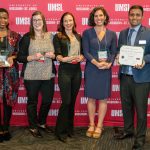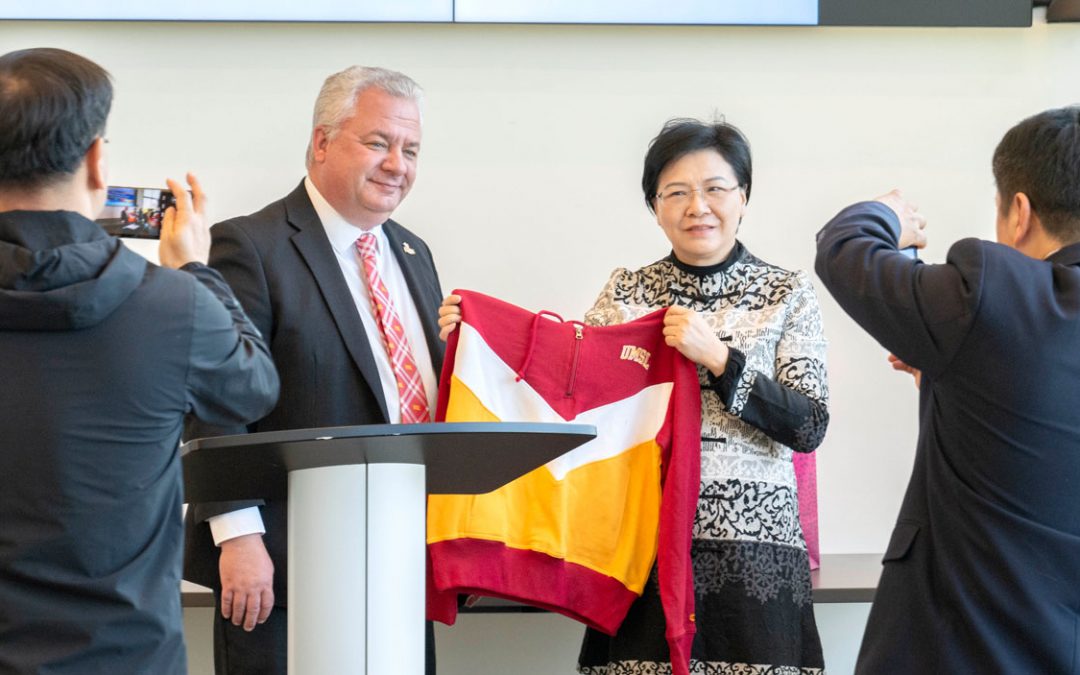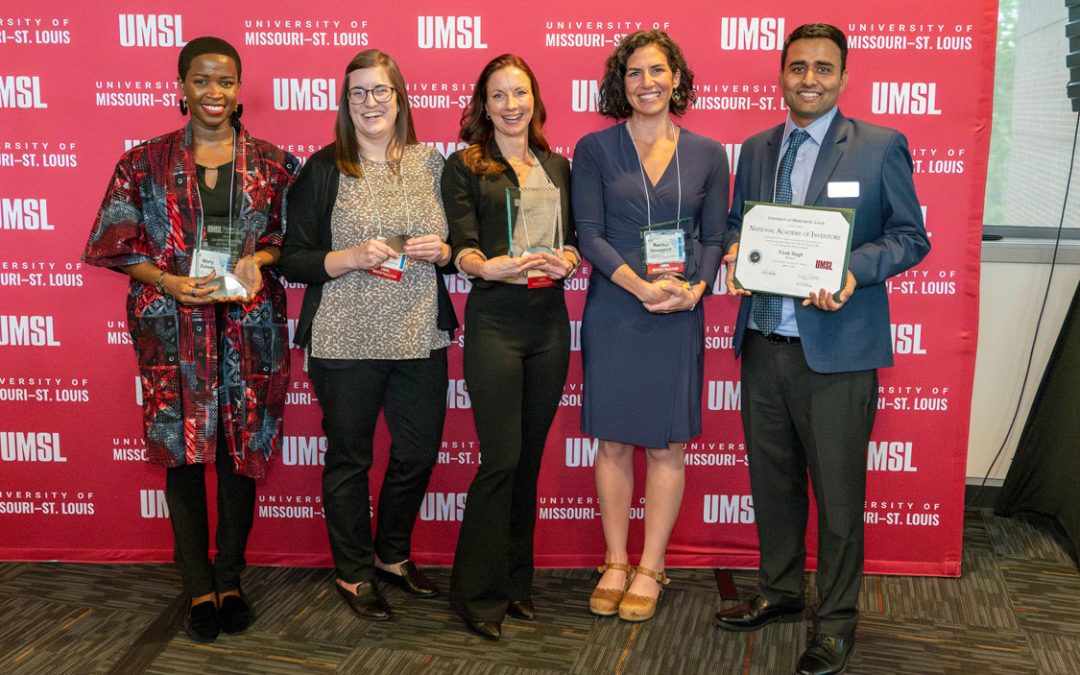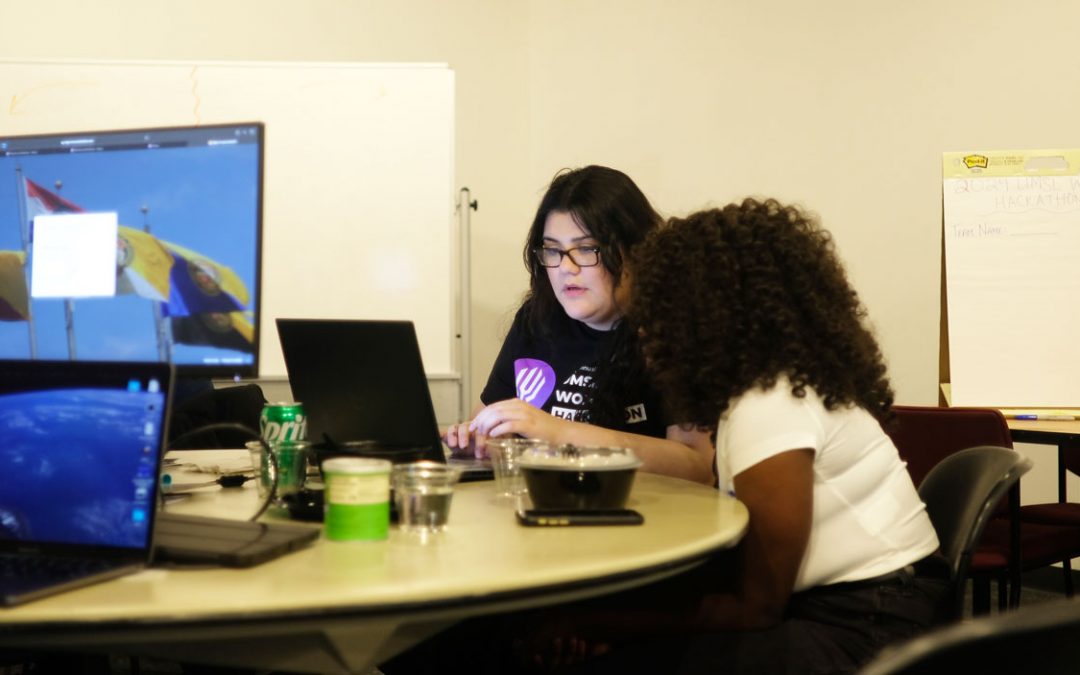
Lauren Salminen, a UMSL doctoral student in psychology, is now a published researcher. Last month she had two articles published on the same day. (Photo by Jen Hatton)
Those outside the academic world aren’t always aware of the importance of publishing, but for a graduate student hoping to land a tenure-track position at the university level, having articles accepted for publication is a very big deal. So imagine the excitement of Lauren Salminen, a second year doctoral student in behavioral neuroscience, when last month she had two articles accepted for publication on the same day.
The first email she received was from Jacob Bolzenius, a fellow graduate student and the primary author of an article surveying cognitive performance and self-reported behavioral outcomes in veterans with mild traumatic brain injury, on which Salminen was a co-author. His email said that their paper would be appearing in the Applied Neuropsychology.
“I was happy, but also jealous because the other paper I had out at the time, on which I was first author, was a genetics paper that just didn’t seem to fit any journal’s exact aim or scope,” she said. “It’d been a frustrating process trying to place it.”
But any frustration and jealousy she was feeling quickly went away when later that same day she got a second email saying that article she just couldn’t find a home for had been accepted by The International Journal of Neuroscience. Salminen says more than anything she felt relief.
Though the day was definitely a roller coaster, she says it does not compare to the day last February when she had her first ever piece of research published in a peer-reviewed publication.
“All day I bawled my eyes out,” Salminen said about finding out her first piece of published research would appear in Brain Imaging and Behavior.
It is of course a great validation of your work to have it accepted into prestigious publication, but Salminen’s excitement also stems from the fact that every acceptance is a new item on her C.V., making her a stronger candidate for postdoctoral fellowship positions when she graduates in two years.
Rob Paul, professor of psychology and director the Behavioral Neuroscience PhD program at UMSL, said having students like Salminen conduct and publish their own research as lead authors is exactly the intent of the program.
“We are very heavily focused on training our students to do research,” Paul said. “Both in terms of obtaining grant money in support of their research and then of course in writing their papers that are generated out of those grants. Learning to become productive researchers is a focal point of our graduate program.”
Salminen agrees that doing is a key to her success.
“If you are not a self-starter, you won’t get anywhere,” she said. “The course load after your first year is light, leaving the rest of your hours for research. So what you do with that time is pretty much up to you. I’m always writing, even when I’m in the middle of something I’m already thinking about what I want to work on next.”














